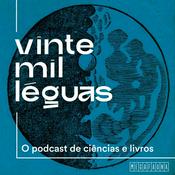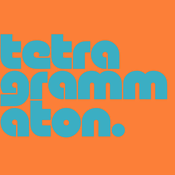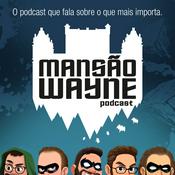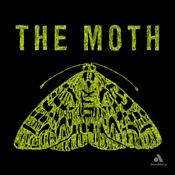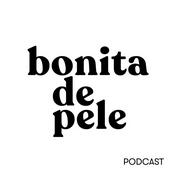Episódios Disponíveis
5 de 205
- Olive Oil, Saffron Gelato & The Great Ginkgo Takeover — w/ Nick Coleman & Ariel JohnsonDave is back with a packed studio and longtime friend of the show Nick Coleman — olive oil educator, sensory expert, and musician behind HGH — fresh off a trip to Greece teaching at the International Olive Oil Network. They go deep on how to detect defects in olive oil by smell alone, why fruité noir works when done intentionally, olive fly maggots, pruning for quality fruit, and why every producing country swears theirs is the best.Noma scientist and author Ariel Johnson joins mid-show, jumping straight into flavor chemistry: why plum frozen yogurt tastes like strawberries, how to reverse-engineer hogo for non-alcoholic tiki drinks, sulfur compounds in durian, chlorophyll behavior in green herb oils, and more. Saffron custard gelato, carotenoids, pressure-cooking aromatics, British potatoes — nothing is safe.The crew also spirals into glorious tangents:• DIY Danish pork roast & the perfect crackling sandwich• Street food logic — what should be eaten on the move• The underrated beauty (and stink) of ginkgo trees• Why wrapping potatoes in foil ruins them• Delivery fries, baguette sandwiches, and sidewalk etiquette rage• VR garbage, museum exhibits, waiting for Godot w/ Keanu & Alex WinterPlus olive oil tasting in-studio, Patreon callers, and a preview of upcoming episodes — including Kevin from Noma returning soon. Hosted on Acast. See acast.com/privacy for more information.--------1:00:26
- From Food Trucks to Footwear: Daniel Shemtob on Lime Truck and SNIBBSDave is joined by chef, food truck lifer, yakitori operator, and SNIBBS co-founder Daniel Shemtob for a run through hearts, food trucks, and what actually keeps you upright on a greasy kitchen floor. They start with skewers and offal: chicken hearts vs duck and beef heart, a Korean beef-heart “Heart & Soul” taco, tortilla engineering, and why overstuffed tacos are a design flaw. From there it’s boiled peanuts, peanut butter nerdery, uncooked cranberry “relish” with horseradish, Thanksgiving recaps from LA, Milwaukee, and beyond, plus British Columbia saffron versus Iranian saffron and how Persian techniques layer saffron, rosewater, and pistachio. Quinn and Dave get into extraction temperatures for mushrooms and saffron, raising kids to eat more than grilled cheese, and where dishes like tofu stroganoff and meat-free mapo tofu do (and don’t) earn the original name. In the back half, Daniel breaks down what 15 years on The Lime Truck have really taught him: why most of the money is in catering, how to design menus that can scale up and down, and how easy it is to gross big numbers and still make almost nothing if you don’t control labor and food costs. He also walks through the origin of SNIBBS—his own career-changing slip-and-fall, working with an orthopedic surgeon, why chefs need firm soles and a small but real heel drop, and how he ended up building a chef-driven shoe brand backed by people like Nancy Silverton, Andrew Zimmern, and Michael Voltaggio. Hosted on Acast. See acast.com/privacy for more information.--------1:01:59
- Turkey, Toast & Tomes: Classics in the Field with Matt SartwellFor this Thanksgiving “Classics in the Field” episode, Dave is back in studio at Rockefeller Center with Kitchen Arts & Letters’ own Matt Sartwell for a long, nerdy tour through cookbooks, regional food, and holiday obsessions. John’s on mic, Joe’s on the panels, and the show kicks off with cranberry-sauce loyalties, paper-bag chicken nostalgia, and why Dave will never forgive you if he walks into your house on Thanksgiving and it doesn’t smell like turkey.Matt announces Kitchen Arts & Letters’ new kids’ cookbook club—built around Peter Kim’s Instant Ramen Kitchen and led by Annette Tome and Pam Abrams—then dives into listener questions: the single gin book he’d take to a desert island; what to give a Spanish-cuisine nerd who actually wants context; how to hunt down Japanese parfait inspiration; and which books really capture Cape Cod and New England cooking.From there, it’s deep cuts: Provincetown seafood and Pops Masch’s Cooking the Catch, John Thorne’s Simple Cookingand his legendary toast essay, William Woys Weaver’s Christmas desserts and class-conscious holiday history, and the under-the-radar Aria regional cookbook series. Along the way Dave rants about lavender in gin, cold fried chicken with shredded cabbage, why you should cut the back out of your turkey, and why smaller birds (and a second turkey for sandwiches) are non-negotiable. Hosted on Acast. See acast.com/privacy for more information.--------1:00:49
- Six Seasons of Pasta with Joshua McFaddenDave and the crew welcome chef and author Joshua McFadden to talk about his new book Six Seasons of Pasta: A New Way with Everyone’s Favorite Food. They get deep into dried vs fresh pasta, why salting your water to around 1% actually matters, the right way to use olive oil at the beginning and the end, and how a 50/50 Parm–pecorino mix behaves in the pan. Joshua explains the thinking behind his “six seasons,” why he’s obsessed with dried noodles, granular pesto, tuna mac, and nut ragù, and how no-boil lasagna sheets somehow made the cut. Along the way they veer into onion-tart sandbagging, salted cooking wine, U.S. butter politics, zucchini as “water bags,” pears vs apples in the Willamette Valley, cabbage glory, and Dave’s pressure-cooked Westphalian pumpernickel experiments. Hosted on Acast. See acast.com/privacy for more information.--------1:01:06
- No Tangent Tuesday: Pressure-Cooked Pumpernickel, Patty Melts, and Hot Cocktail TacticsDave Arnold, with Jean and Joe Hazen, runs a tight, New-York-only, “No Tangent” session—clearing the inbox and dropping hard technique. Dave details a successful Westphalian pumpernickel shortcut (from ~2+ days to a single shift) using controlled enzyme rest and pressure-cooking in wide-mouth pint jars. From there the crew debates the only correct patty-melt bread (rye), cheese choice (Swiss vs. American), and why English muffins punch above their weight. They hit chutney’s disappearance from American fridges, flatfish eye migration (confirmed), and the axolotl-as-food oddity. Listener questions cover freeze-dried fruit ice cream, pairing cocktails on prix fixe menus, induction with 5-ply pans, espresso-tonic nucleation, lactic-acid math for brewers, hot cocktail service, yuzu preservation, brand-specificity in recipes, flour tweaks for pizza, and carbonated dairy constraints. Quick shoutouts land on Manhattan Special, myrrh and schisandra infusions, and next week’s guest, Joshua McFadden. Hosted on Acast. See acast.com/privacy for more information.--------42:18
Mais podcasts de Arte
Podcasts em tendência em Arte
Sobre Cooking Issues with Dave Arnold
The new home for Dave Arnold's weekly show "Cooking Issues", where he tackles listener questions on anything food and cooking related. Hosted on Acast. See acast.com/privacy for more information.
Site de podcastOuça Cooking Issues with Dave Arnold, Pequenas Grandes Histórias, com Thais Bilenky e muitos outros podcasts de todo o mundo com o aplicativo o radio.net

Obtenha o aplicativo gratuito radio.net
- Guardar rádios e podcasts favoritos
- Transmissão via Wi-Fi ou Bluetooth
- Carplay & Android Audo compatìvel
- E ainda mais funções
Obtenha o aplicativo gratuito radio.net
- Guardar rádios e podcasts favoritos
- Transmissão via Wi-Fi ou Bluetooth
- Carplay & Android Audo compatìvel
- E ainda mais funções


Cooking Issues with Dave Arnold
Leia o código,
baixe o aplicativo,
ouça.
baixe o aplicativo,
ouça.



